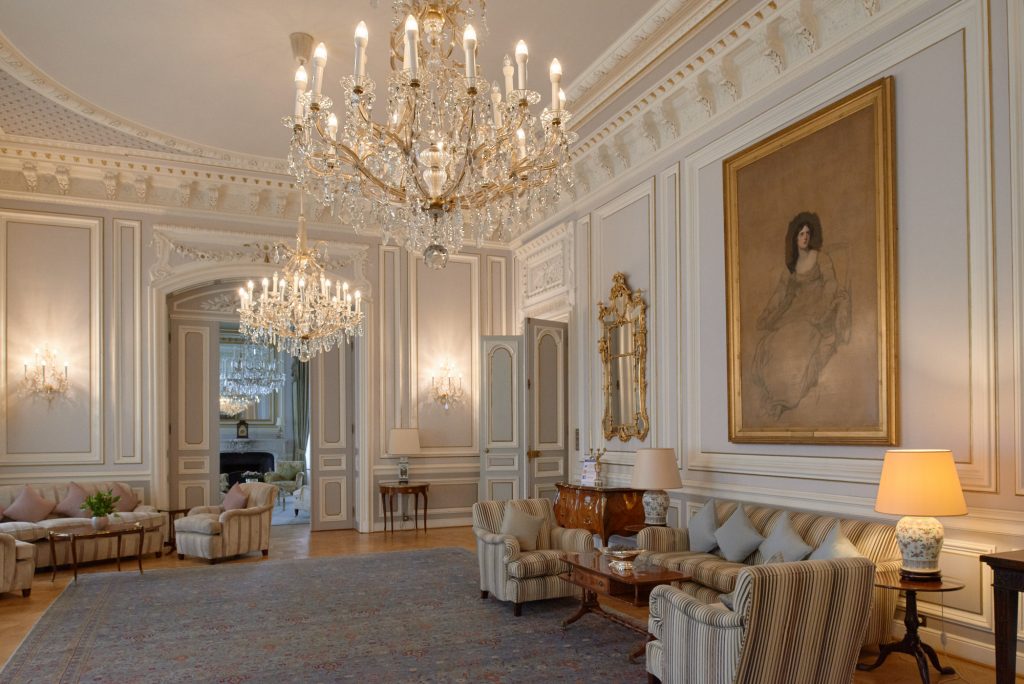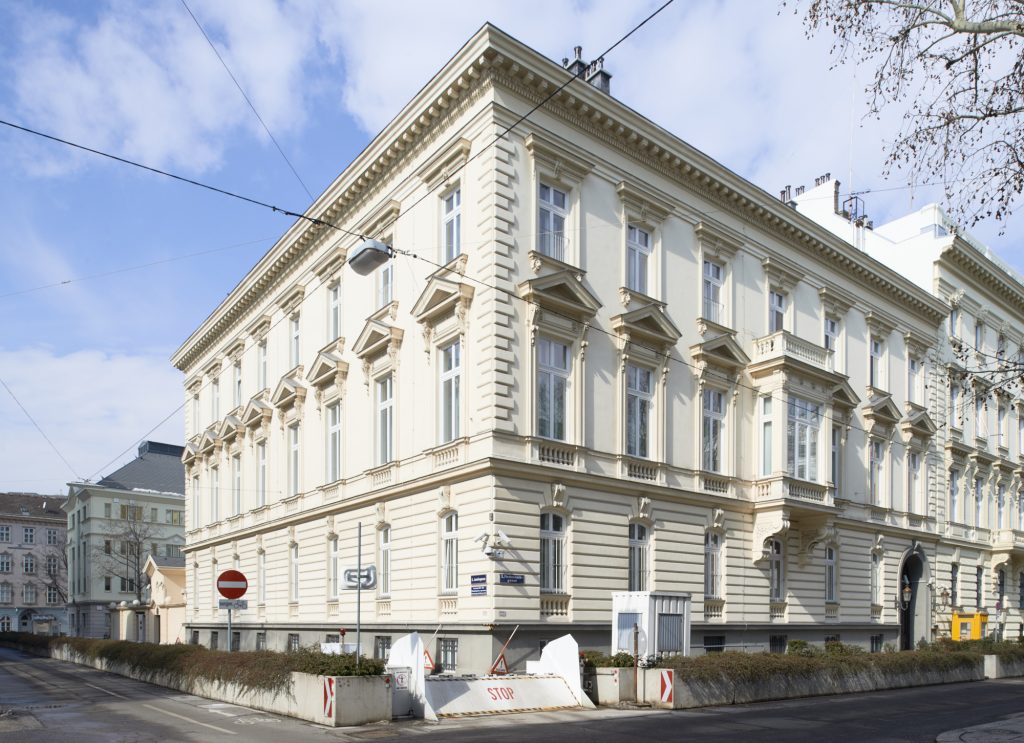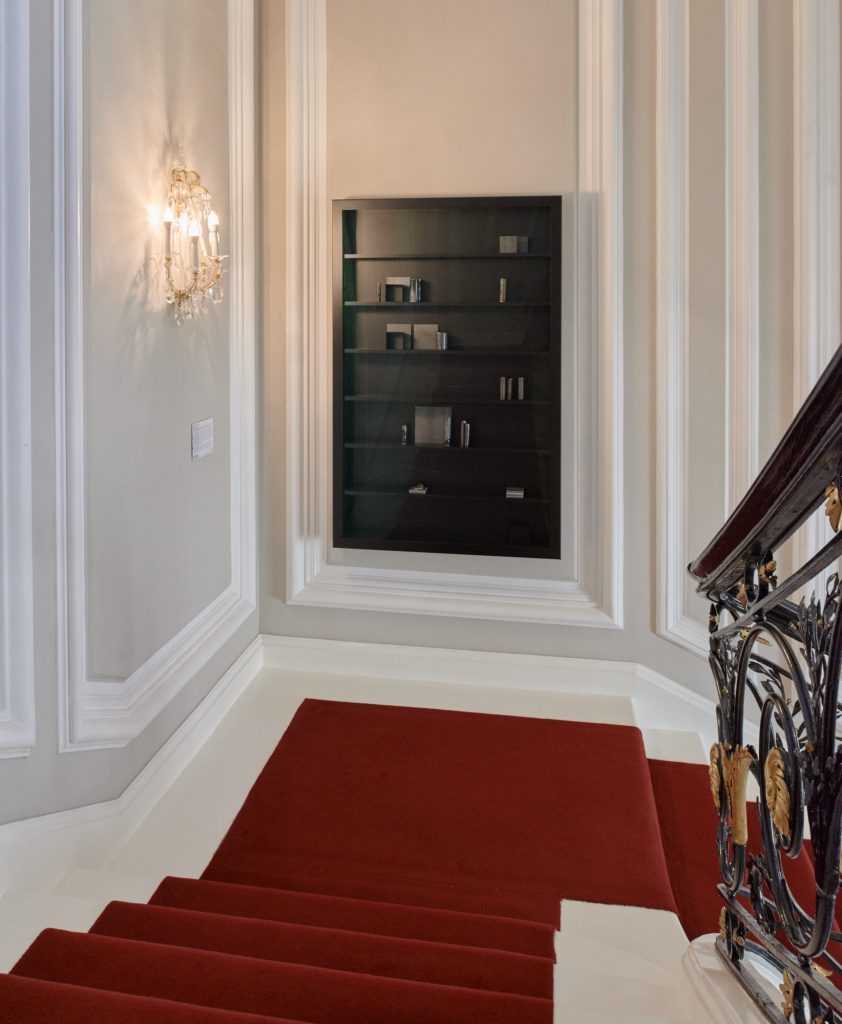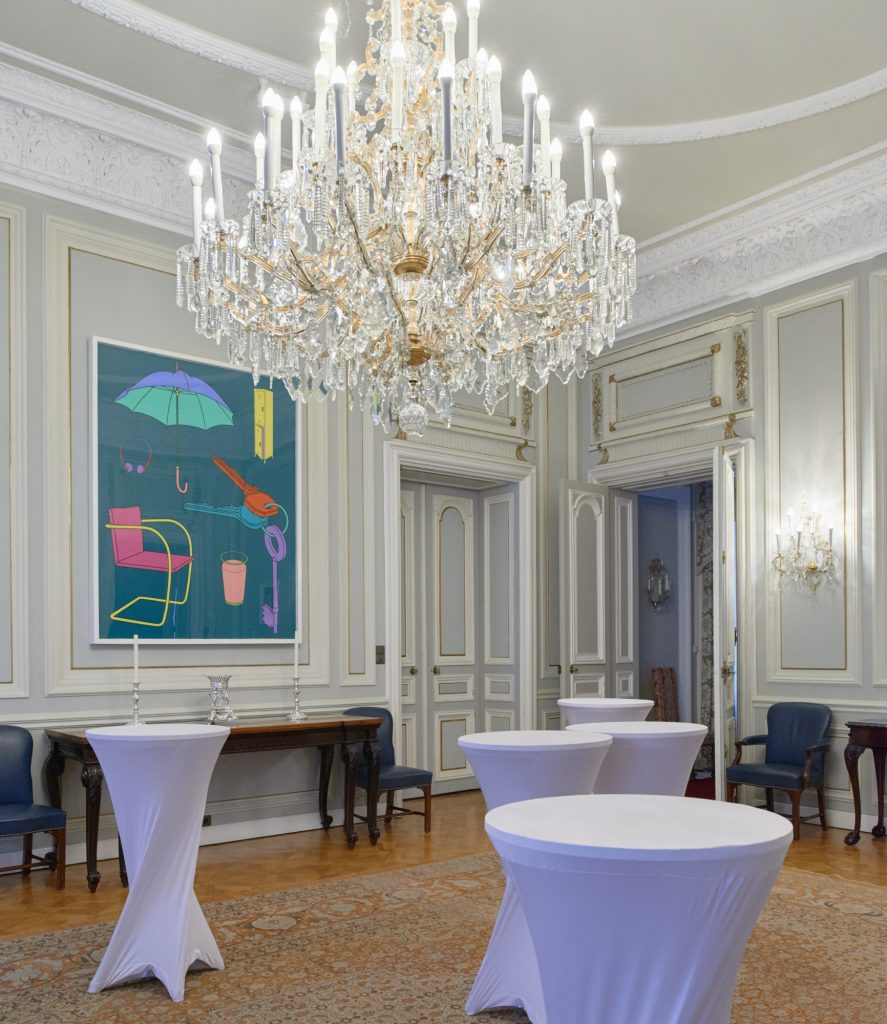#KeenOnWien
The British Ambassador to Austria takes you on a guided tour of the Residence in Vienna. He gives an account of the fascinating story of the British-Austrian diplomatic relations and why he is so #keenonWien.
Not just a pretty palace

Thomas Lawrence’s 1813 portrait of Lady Nugent on display in the British Ambassador’s Residence, Vienna © Crown Copyright
Art and culture play an immense role in the life of this city and particularly in the lives of the senior Austrian stakeholders, with whom we work day-to-day on everything from the future of the UK and the European Union through to issues on trade, investment and security. We work closely with the Government Art Collection and the British Council to ensure we use art and culture, including in the residence, to actively to promote the UK’s status in Austria. Our activities can range from supporting a J. M. W. Turner exhibition in Gmünd to highlighting links between Portugal, Britain, Vorarlberg and Tacita Dean – a string of connections between artists and places in Europe, which you can read more about in my my blog on the Foreign Office site. This also brings to mind qualities of another of the fine works of art at the residence in Vienna, Thomas Lawrence’s 1813 portrait of Lady Nugent, shown above.
Art from the Government Collection in the building, highlights UK’s diplomatic history; its status as an international cultural centre; and enhances the status of the Residence, which in turn helps visitors perceive it not just as a beautiful historical palace but as the crucible of Austro-British relations. The art adds weight and stature to events at the residence, it boosts our outreach and influence across the Austrian system – and the building, the embassy and the UK’s image in the busy diplomatic hub of Vienna would be diminished without it.
Take a look below at some of the art in the Residence and get sense of its Viennese Rococo Revival interior.
A diplomatic hub
The Residence in Vienna is a shared resource between three British diplomatic missions – the bilateral mission, the United Nations Mission and the mission for the Organization for Security and Co-operation (OSCE). The city’s role as a diplomatic and transport hub means we stage numerous international conferences in Vienna. The Residence in Vienna opened in 1875 and has the distinction of being one of the earliest buildings constructed for a British Ambassador’s Residence and that still remains in use for that purpose.

Exterior view of the British Embassy & Residence, Vienna © Crown Copyright
Rococo Revival
The Residence building owes its existence to the efforts of Sir Andrew Buchanan, appointed British Ambassador to the Habsburg Court in Vienna in 1871. Finding that the then-residence in Herrengasse was to be sold by the landlord, he persuaded the Foreign Office to purchase a plot of land on the estate of the Metternich Palais, and to construct a new house for the sum of 275,000 florins. Victor Rumpelmayer, an Austrian born in Pressburg (now Bratislava), was appointed architect. He later also designed the Anglican Christ Church opposite the Residence (for which permission had to be obtained from Emperor Franz Josef) which was originally part of the then much larger plot of land.
The exterior of the house is in the classical style, but more restrained than other architecture in that style in Vienna, such as the Parliament, or many of the grand houses on the Ringstrasse. The interior decoration, though often described as Viennese Rococo Revival, is similarly less grandiose. The entrance doors, set off-centre, opened into a carriageway that led into a stable yard, which is now the Residence garden.
With the disintegration of the Austro-Hungarian Empire after the First World War, the Embassy was downgraded to the lower diplomatic ranking of a legation. Much of the silverware was transferred to the British Embassy in Brussels in 1921, and returned to Vienna only in the 1950s. None of the original 19th century furniture survives, although many of the gifts from other ambassadors or from the Habsburg royal family are still displayed today. A notable example is a portrait of Emperor Franz Josef, which he presented to Sir Horace Rumbold, 8th Baronet, on his retirement as Ambassador to Austria in 1900.
After the Anschluss in 1938 the house was sold to the National Socialist Flying club. It was eventually purchased back by the British government at the end of the Second World War, at the same price received for it in 1938. It had suffered much damage from bombing and neglect. One bomb went through the roof and into the main stairwell, but luckily did not explode. The interior of the Residence was restored with considerable imagination and is now considered one of the finest British diplomatic residences worldwide. The exterior of the house was restored in 1992.
Director of the Government Art Collection, Penny Johnson talks about her visit to the Embassy in Vienna to install a work by the artist Edmund de Waal
‘Moments of pause or recollections of loss’. Edmund de Waal’s Vienna.

metamorphosen I by Edmund de Waal installed in the British Ambassador’s Residence © Crown Copyright
metamorphosen I, a work by Edmund de Waal installed in the Residence in 2017, symbolises this coming together of art, diplomacy and history. The genesis of how this important and unique work came to be in the residence is set out in my blog post of November 2018.
Edmund De Waal’s moving memoir, The Hare with Amber Eyes, describes the fate of his family in Vienna after the Nazis seized power in 1938. He was invited back to the city in 2016 to curate an exhibition, During the Night, at Vienna’s Kunsthistorisches Museum, exploring themes of anxiety, fear of the unknown and terrors of the dark. When I met Edmund at a 2 a.m. reading at the Museum and he offered one of his works on a long loan to the Embassy I was delighted to accept. metamorphosen I, is situated on the stairs where many visitors pause to examine it. It often triggers discussion and debate on Austria’s history; its relationship with the United Kingdom; and the role of art as both an instrument and a symbol of cross-cultural engagement. I treasure it and hope it will hang in the residence for many years to come.

Untitled by Michael Craig-Martin on display in the British Ambassador’s Residence, Vienna © Crown Copyright
Written by Leigh Turner, British Ambassador to Austria.